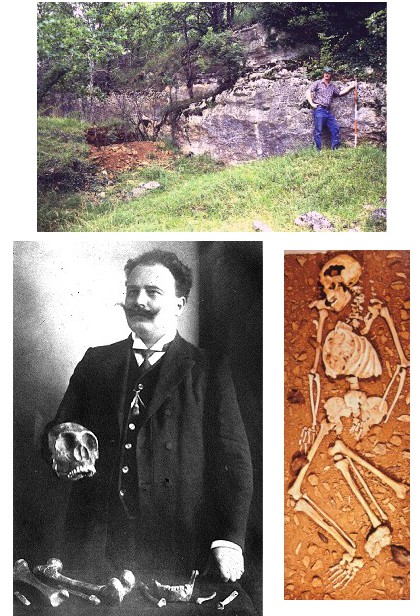Combe-Capelle - Roc de Combe-Capelle
The Roc de Combe-Capelle is a rather large rockshelter just at the foot of the limestone cliff face at the top of the slope. It was originally excavated in 1907 by Villeréal, then by the Abbé Chastaing. However, it was the excavations of Otto Hauser that brought the most attention to the site when in 1909 he recovered the almost complete skeleton of a modern Homo sapiens in what he thought was a level containing a Chatelperronian industry. Unfortunately, the excavation techniques employed by Hauser at the time were not very rigorous and there has been much debate as to the exact provenience of this find; this debate will probably never be resolved because there are virtually no deposits left at this locale. The stratigraphic succession appears to have included Chatelperronian, Aurignacian, Gravettian, and Solutrean, but it has been published in many different versions. There is even the possibility, as suggested by Hauser, that there was a Mousterian industry at the base. Given the current debate concerning the issue of continuity of the aboriginal Neandertals or their replacement by moderns associated with the Aurignacian in Europe, this lack of clear archaeological association, indeed, is unfortunate. To make matters even worse, however, most of the skeleton itself is believed to have been destroyed during World War II.
